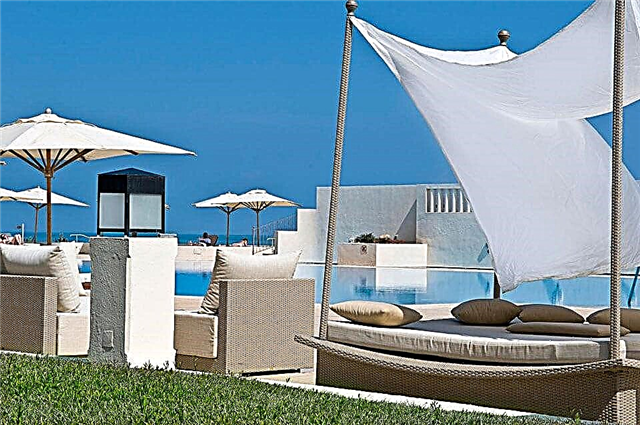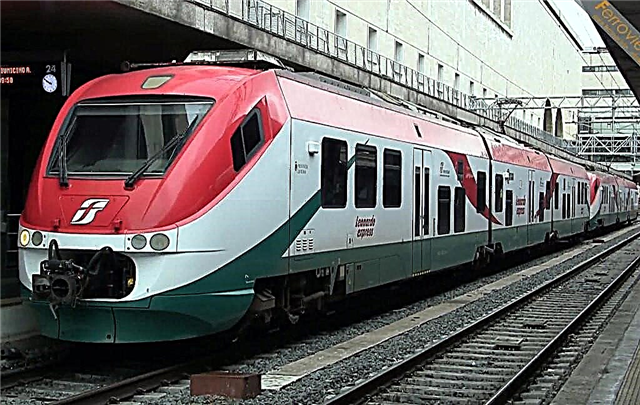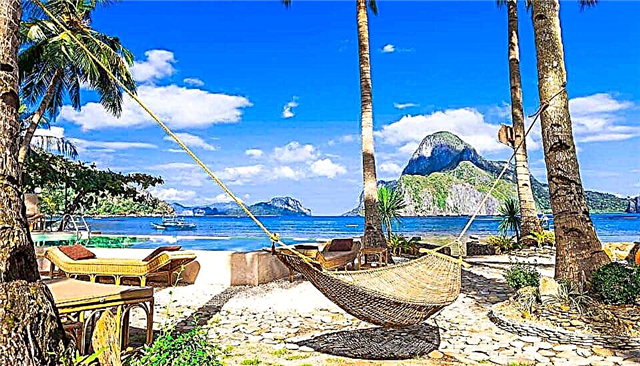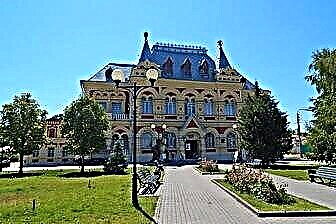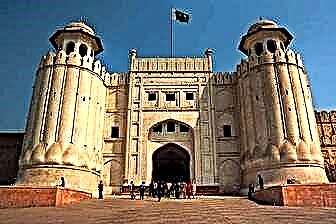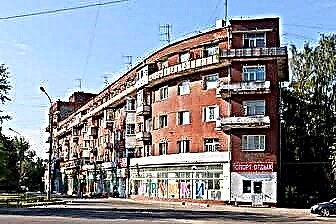Several well-known facts are connected with Ivanovo - it is the city of brides, the textile industry and the first Council. Since the 17th century, local calico products were widely known throughout Russia and abroad, from the 18th century the construction of large manufactories began and the city received a powerful impetus for development. It was in Ivanovo at the beginning of the 20th century that the workers' movement began, which eventually ended with the October Revolution.
As you can see, the city has something to offer a tourist - a rich and eventful history has left many traces. The center is a series of elegant stone mansions and majestic churches, original avant-garde constructivist buildings are scattered in the districts, the facades of textile factories, which have not yet been destroyed by time, remind of the scale of industrial construction of the 18th-19th centuries.

The best hotels and hotels at affordable prices.
from 500 rubles / day
What to see and where to go in Ivanovo?
The most interesting and beautiful places for walking. Photos and a short description.
Monuments of constructivism
The concept of constructivism in architecture developed from the communist idea of universal equality and brotherhood. In the 1920s and 30s, Ivanovo was of great importance as a revolutionary cradle, where the labor movement was born. Given this highly symbolic role, it was here that innovative ideas were implemented, which became a major breakthrough in civil engineering after 1917. Several dozen monuments of constructivism architecture have survived in the city: a horseshoe house, a bird house, a ship house, a 72-apartment building of the City Council, a collective house and other buildings. They are united by simplicity of forms, maximum functionality of the interior space and monolithic appearance.

Shchudrovskaya tent
A civil building of the 17th century, the only building of this type on the territory of the Ivanovo region and neighboring regions that has survived to this day. Three hundred years ago, the building housed an order hut. The structure was given the status of an architectural monument back in 1926, but the planned restoration began only 40 years later. Today, the Shchudrovskaya tent is a branch of the local museum of local lore.

Revolution square
The central square of Ivanovo, which until 1917 and in Soviet times was the administrative center of the city, and in tsarist Russia it was also the center of trade. In 1915, by order of the imperial authorities, an anti-war demonstration was shot here, killing more than 100 people. In 1975, in memory of the fighters of the First Russian Revolution of 1905, a monument was erected here, behind which a park was laid out for walking.

Square of victory
The area is located in the Frunzensky district. Around it are buildings in the constructivist style, erected in the 1920s and 1930s. The main architectural objects are the monument to St. George the Victorious and the temple in his honor, built in the 2000s. Until 2012, there was a monument-stele on the square in honor of the 40th anniversary of the Victory, but in connection with the reconstruction and the beginning of the improvement of the territory, it was moved.
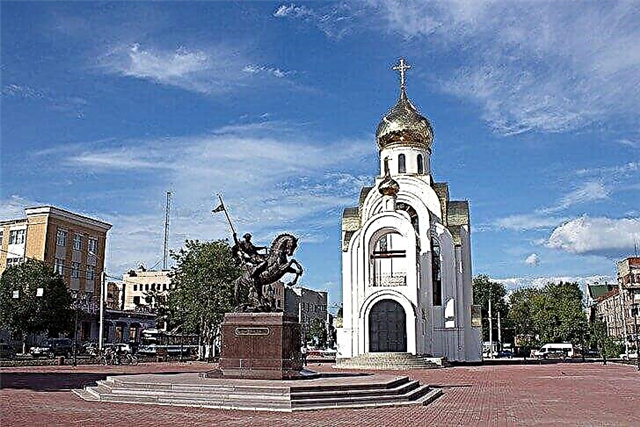
Memorial to the heroes of the front and rear
The memorial is made in the form of a sculptural group: a figure of a soldier on a high pedestal and statues of two weavers who work tirelessly for the needs of the front. Along the edges of the monument are two cannons of the 1942 model. The memorial is dedicated to the Ivanovo people who took part in the Second World War and those who worked in the rear - to everyone who made an invaluable contribution to the Victory. The monument was erected in 1987.

Art square
A small square at one of the busy city crossroads, where impromptu concerts are often held, and creative youth gathers. There are no trees here, only colorful flower beds, alleys and benches. The place is famous for the monument to A.D. Severny - the performer of songs in the style of urban folklore and the copper figure of a dachshund, as if hurrying past the lawns, hurrying about his business.

Museum of Industry and Art
The museum was opened in 1914 at the initiative of the industrialist and philanthropist D. G. Burylin. The collections were housed in a neoclassical building. For several decades, the manufacturer has collected many exhibits belonging to different eras: paintings, weapons, porcelain, coins, books, which he decided to donate to the city. At the moment, the museum has several permanent exhibitions and a concert hall.

Museum of ivanovo chintz
It is logical that in the textile region there is a whole museum dedicated to this industry. The exposition was opened in 1987, it was based on a private collection D. The collection is dedicated to the history and modern achievements of the textile industry, it presents the Ivanovo chintz as a part of decorative and applied art, and not just folk craft. Part of the exhibition tells about the life and career of fashion designer Slava Zaitsev, a native of Ivanov.

Ivanovo Regional Art Museum
The museum was founded in the 1950s. The collection was housed in a 19th century building designed by V.F.Sikorsky. The basis of the collection was made up of exhibits from private collections of manufacturers D. G. Burylin and N. P. Ruzsky, as well as items transferred from the Tretyakov Gallery and the Russian Museum. At the moment, more than 40 thousand items are stored and exhibited in the gallery. The time period is from Ancient Egypt to Soviet art.

Museum of the First Council
The Museum of the First Council was opened in 1967 in the building of the former bourgeois council of the early XX century, built in the eclectic style. In 1905, meetings of the first Soviet of Workers' Deputies in the entire Russian Empire were held on its territory. In 1980, the main exposition was moved to another premises, and various exhibitions and thematic events began to take place in the historical one.

Museum of the Soviet Automotive Industry
As the name suggests, the collection is dedicated to the automotive industry. In the museum you can see all the Soviet classics: "Volga", "Chaika", "ZIL", "GAZ". Presented not only mass models like "penny", but also quite rare copies, released in limited quantities. All cars are restored and repaired - any can be started and driven.

Museum of the artist A.I. Morozova
The exposition is located on the territory of a wooden house from 1910, which was originally built for an aristocrat of Austrian origin L.P. Auer. The collection is dedicated to the life and work of the painter A.I. Morozov (by the way, he himself chose the premises for the museum of his own name). The collection consists of several dozen paintings and drawings. In addition to the standard excursion, the museum staff organizes holidays, memorial evenings and thematic lectures.

House-Museum of the Bubnov family
A. S Bubnov is a famous revolutionary and political figure of the Soviet era, a native of Ivanovo-Voznesensk. The house that belonged to his family was built in the middle of the 19th century and at the moment it is the only surviving building in the city with a mezzanine, erected in the style of late classicism. In 1976, the estate was recognized as an architectural monument, two years later a memorial museum was opened on its territory.

Ivanovo "Palace of Arts"
A theater complex consisting of several stages: musical, dramatic, puppet. The building began to be erected in the 1930s on the foundations of the monastery buildings. Due to serious architectural flaws, it quickly began to deteriorate, which led to reconstruction that took decades to complete. The work was completed only in the late 1980s. As a result, the size of the complex increased by 15%.

Vvedensky monastery
Convent founded in 1991.The complex of buildings of the monastery is located in the center of Ivanovo around the Church of the Presentation of the Virgin - an architectural monument of the early XX century. Despite its young age, the community can be proud of its relics: the relics of the new martyrs and many ancient saints. The monastery has a publishing house and a printing house that prints church literature.

Assumption Monastery
The monastery arose in 1998 around the Assumption Church, built in the first half of the 19th century. The temple was located at the cemetery, on the territory of which a garden and a summer theater were organized in Soviet times. Until 1995, the building was in a deplorable state, but after the transfer to the Russian Orthodox Church, it was restored. Gradually, people began to gather at the church, wishing to lead a monastic life. So three years later the monastery was formed.

Transfiguration Cathedral
An architectural complex in the Russian style, built in the 19th century. The building was erected at the expense of the owner of textile manufactories M.N.Garelin according to the project of the Moscow architect A.S.Kaminsky. For quite a long time, the temple was the only functioning church in Ivanovo, while others were closed and destroyed. The restoration of the complex began almost immediately after the end of the Second World War. Today the interior and exterior decoration is in excellent condition.

Sorrow Church
A 19th-century temple with a hipped-roof bell tower, built in Dmitrovskaya Sloboda (nowadays it is the territory of Ivanovo) at the expense of local merchants. The historic building was destroyed in the 1970s, and a sports complex was about to be built in its place. The modern temple - the heir to the destroyed one - was erected in 1999. The church was named in honor of its main shrine - the image of the Mother of God “Joy of All Who Sorrow”.

Kazan Church
The church was built in the 18th century as a building for a cotton-printing factory. At the beginning of the 19th century, the new owner of the enterprise decided to convert the building into a prayer house for the Old Believer community. Until 1860, services were secretly held there. At the beginning of the 20th century, the building was rebuilt again and made a full-fledged church out of it. In Soviet times, it was used as a residential building. After the transfer of the building to the Russian Orthodox Church, services resumed.

Park of Culture and Leisure named after V. Ya. Stepanova
A public park on the site of the private property of the industrialist Garelin appeared after the Revolution. In 1925, the authorities decided to improve the area, but work began only after the end of the Second World War. Attractions, a dance floor, a library, a theater stage and a cafe were built in the park. A pier for boats and a beach were organized on the Uvod River. After the reconstruction in 2013, the square again became one of the favorite places for recreation of the townspeople.



